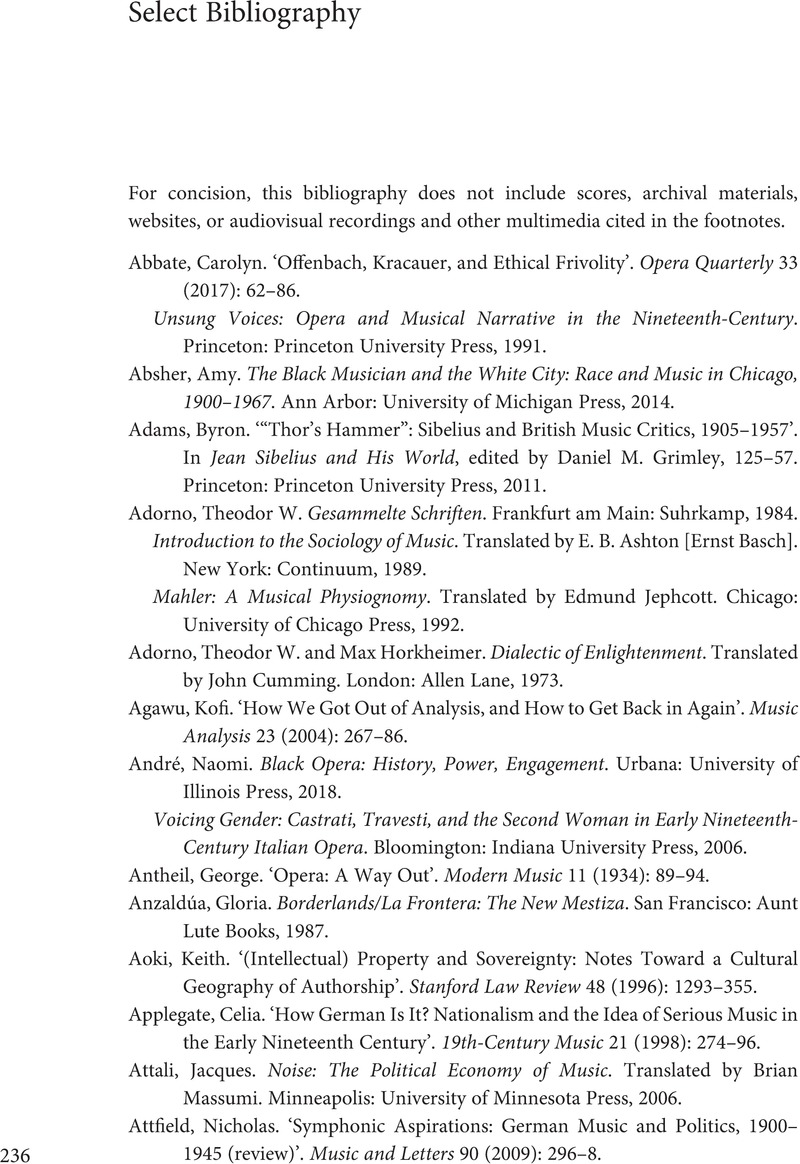Book contents
- Interwar Symphonies and the Imagination
- Music in Context
- Interwar Symphonies and the Imagination
- Copyright page
- Dedication
- Contents
- Figures
- Examples
- Preface
- Acknowledgements
- Abbreviations
- 1 Between Europe and America: Kurt Weill’s Symphony in a Suitcase
- 2 Listening for the Intimsphäre in Hans Pfitzner’s Symphony in C♯ Minor
- 3 Liberalism, Race, and the American West in Roy Harris’s Symphony 1933
- 4 Aaron Copland’s and Carlos Chávez’s Pan-American Bounding Line
- 5 Arthur Honegger’s ‘Modernised Eroica’
- 6 The Right Kind of Symphonist: Florence Price and Kurt Weill
- Select Bibliography
- Index
- References
Select Bibliography
Published online by Cambridge University Press: 28 January 2023
- Interwar Symphonies and the Imagination
- Music in Context
- Interwar Symphonies and the Imagination
- Copyright page
- Dedication
- Contents
- Figures
- Examples
- Preface
- Acknowledgements
- Abbreviations
- 1 Between Europe and America: Kurt Weill’s Symphony in a Suitcase
- 2 Listening for the Intimsphäre in Hans Pfitzner’s Symphony in C♯ Minor
- 3 Liberalism, Race, and the American West in Roy Harris’s Symphony 1933
- 4 Aaron Copland’s and Carlos Chávez’s Pan-American Bounding Line
- 5 Arthur Honegger’s ‘Modernised Eroica’
- 6 The Right Kind of Symphonist: Florence Price and Kurt Weill
- Select Bibliography
- Index
- References
Summary

- Type
- Chapter
- Information
- Interwar Symphonies and the ImaginationPolitics, Identity, and the Sound of 1933, pp. 236 - 252Publisher: Cambridge University PressPrint publication year: 2023



